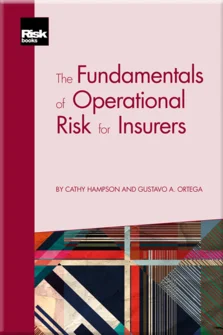Risk Indicators
Risk Indicators
Introduction
The Financial Crisis of 2008 and Subsequent Market Changes
The Business Case for Insurers to Adopt Operational Risk Management
Insurance: Its Products, Services and Business Operations
Insurers’ Operational Risk Governance and Framework
Internal Risk-Event Reporting
External Loss Data
Risk and Control Assessments
Risk Indicators
Reporting and Analysis
The Past, the Present and the Future of Operational Risk Modelling
The Insurance Landscape
Three Lines of Defence
Reputation(al) Risk
Conduct Risk
Conclusions
INTRODUCTION
Risk indicators form part of a comprehensive operational risk framework within an insurance company. If defined and implemented in line with an organisation’s risk appetite, key risk indicators (KRIs) can be predictors of risk exposure and help identify issues before they can manifest into operational risk events. Generally, KRIs monitor changes in the operating environment and contribute to the early-warning signs that can enable organisations to take proactive measures to prevent operational risk losses.
In order for KRIs to be effective, we must understand an organisation’s business profile and critical processes, which will enable better identification of relevant data and allow for adoption of appropriate risk indicators and monitor performance consistently. Many organisations are known to have identified hundreds of KRIs and use this number to manage and monitor risks across different business lines, and in some instances across key processes. However, quantity is actually not what is important within a risk-indicator programme: instead it is the quality of the data and relevancy of the metric against a given process or within a given business line.
In
Copyright Infopro Digital Limited. All rights reserved.
As outlined in our terms and conditions, https://www.infopro-digital.com/terms-and-conditions/subscriptions/ (point 2.4), printing is limited to a single copy.
If you would like to purchase additional rights please email info@risk.net
Copyright Infopro Digital Limited. All rights reserved.
You may share this content using our article tools. As outlined in our terms and conditions, https://www.infopro-digital.com/terms-and-conditions/subscriptions/ (clause 2.4), an Authorised User may only make one copy of the materials for their own personal use. You must also comply with the restrictions in clause 2.5.
If you would like to purchase additional rights please email info@risk.net











